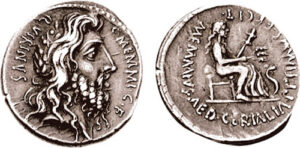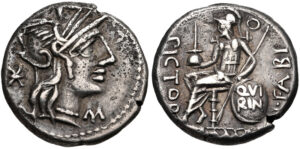

It seems there might be a bit of confusion in the names mentioned. Quirinus and Ixion are distinct figures from different mythological traditions. Let’s clarify each one separately.
Quirinus
Quirinus is a deity from ancient Roman religion and mythology, often associated with the Roman state and its community of citizens. Here are key details about Quirinus:
- Origins: Quirinus is thought to have originally been a Sabine god of storms and thunder, similar to the Roman god Janus or even Mars, the god of war. Over time, his identity and functions evolved.
- Association with Romulus: Quirinus is often identified with Romulus, the legendary founder of Rome, who was deified under this name after his death. This transformation symbolizes the transition from a warrior king to a god of the Roman state.
- Role and Worship: As a god, Quirinus was one of the three major gods of the Roman state religion, along with Jupiter and Mars. He was particularly associated with the well-being of the Roman community and its military defenses.
- Cult: His main temple was located on the Quirinal Hill, one of the seven hills of Rome. The Quirinal Hill and the temple itself were central to his worship and are a testament to his importance in Roman religion.
Ixion
Ixion, on the other hand, belongs to Greek mythology and is known for his infamous deeds and punishment:
- King of the Lapiths: Ixion was a king of the Lapiths in Thessaly. He is most notorious for his betrayal and impiety.
- Crime and Punishment: Ixion committed one of the first recorded murders of kin when he killed his father-in-law to avoid a bridal gift. He was purified of this sin by Zeus but later attempted to seduce Hera, Zeus’s wife. As a punishment for this ultimate betrayal, Zeus bound him to a fiery wheel that spins eternally in the underworld.
- Legacy: Ixion’s punishment is often seen as a cautionary tale about the consequences of hubris and betrayal against the gods. He is also sometimes credited with fathering the Centaurs, through a cloud made in Hera’s image by Zeus.
These two figures, Quirinus and Ixion, illustrate the rich and varied narratives found in Roman and Greek mythology, respectively, each embodying different moral and cultural lessons significant to their societies.